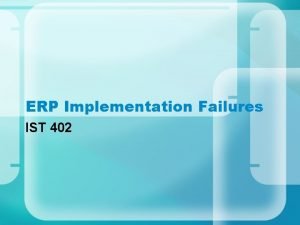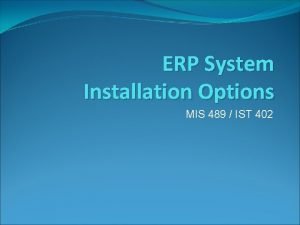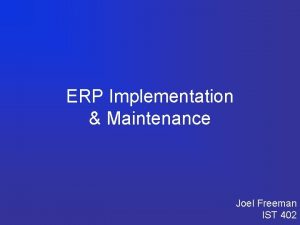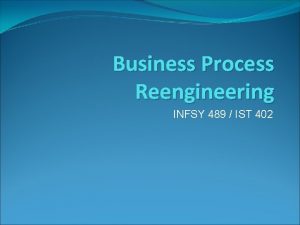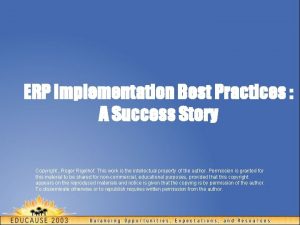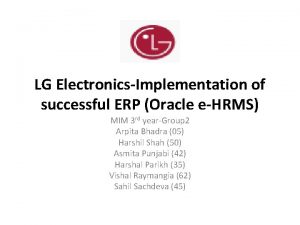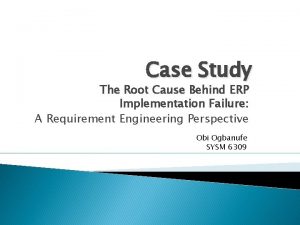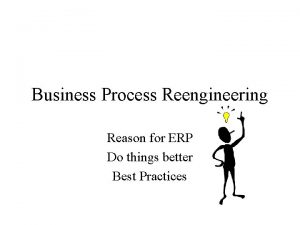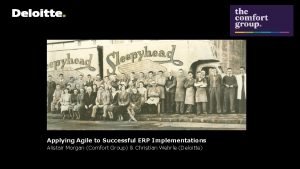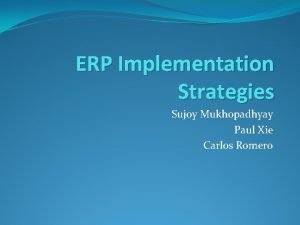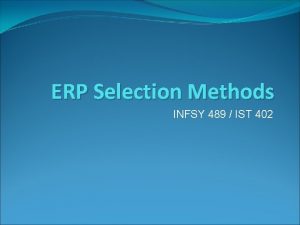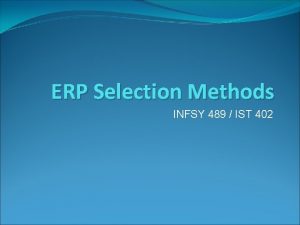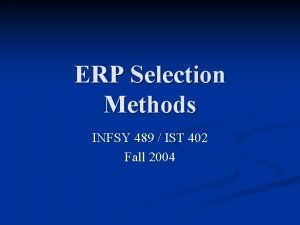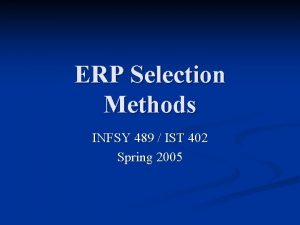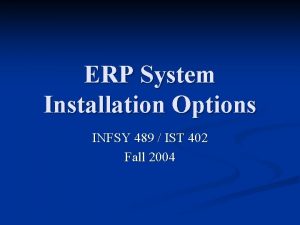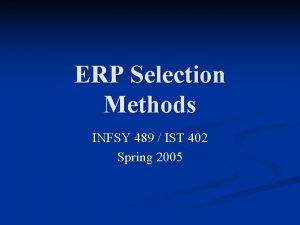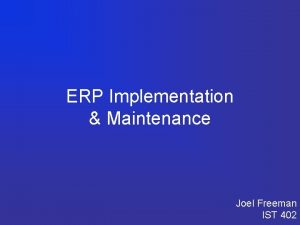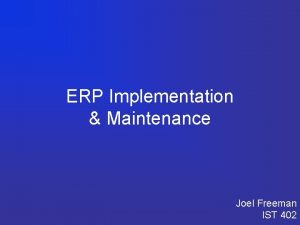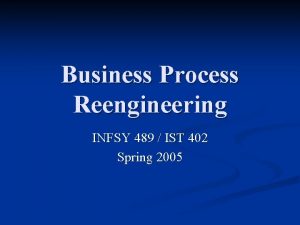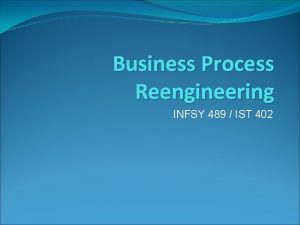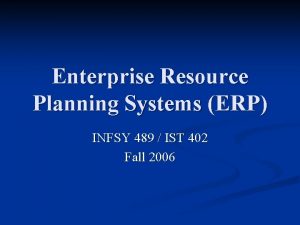ERP Implementation Maintenance INFSY 489 IST 402 Fall














- Slides: 14

ERP Implementation & Maintenance INFSY 489 / IST 402 Fall 2006

ERP Implementation n On average, ERP Implementation… n Takes upward of 2 years to implement n Costs about $15 M n Periods of mediocre or even a decline in company performance are common

ERP Implementation n 3 stages of change… n Decline: ERP fine tuned, users re-learn business procedures n Stabilization: Users become proficient with new system n Pay off: Users familiar with system; additional efficiency attained

ERP Implementation http: //www. serverworldmagazine. com/sunserver/2000/06/images/barrycal. gif 3

Critical Success Factors n Critical Success Factor -> something an organization must do well to succeed Top management support n User involvement n Clear project objectives n

Critical Success Factors n Failure defined as: n n Not attaining the ROI claimed in the approval phase Hershey 19% drop in quarterly profit after ERP n 29% increase in inventory due to order-processing n n City of Oakland n Generated erroneous paychecks for city employees

Critical Success Factors n Miller Industries n n First quarter post-implementation operating loss due to inefficiencies in ERP WW Grainer Inc. n Operating earnings drop $11 million per year postimplementation

Critical Success Factors 1. Clear understanding of strategic goals 2. Commitment by top management 3. Excellent implementation project management 4. Great implementation team 5. Successful coping with technical issues

Critical Success Factors 6. Organizational commitment to change 7. Extensive education and training 8. Data accuracy 9. Forcused performance measures 10. Multisite issues resolved

Implementation Strategy Options n Relationships among business units: n Total local autonomy n Avoids conflict associated with centrally mandated changes n Allows independent initiatives n Reduces risk of implementation project failure Headquarters control financial modules only n Headquarters coordination of operations n Network coordination n Total centralization n

Implementation Strategy Options n Software Configuration n Single financial/single operation n Geographically centralized organizations n Operate as a single management entity n Common business processes and centralized control of flow of material Single financial/multiple operations n Multiple financial/single operation n Multiple financial/multiple operations n

Implementation Strategy Options n Technical Platform Centralized n Distributed n n Management Execution Big bang n Phased rollout n

ERP Implementation IT Project Failure n User Training n

ERP Implementation n ERP Maintenance Corrective maintenance n Adaptive maintenance n n Implement new features n Internal customization n Integration with other software n Perfective n Version upgrade n Preventive n Response times, backups, error logs


